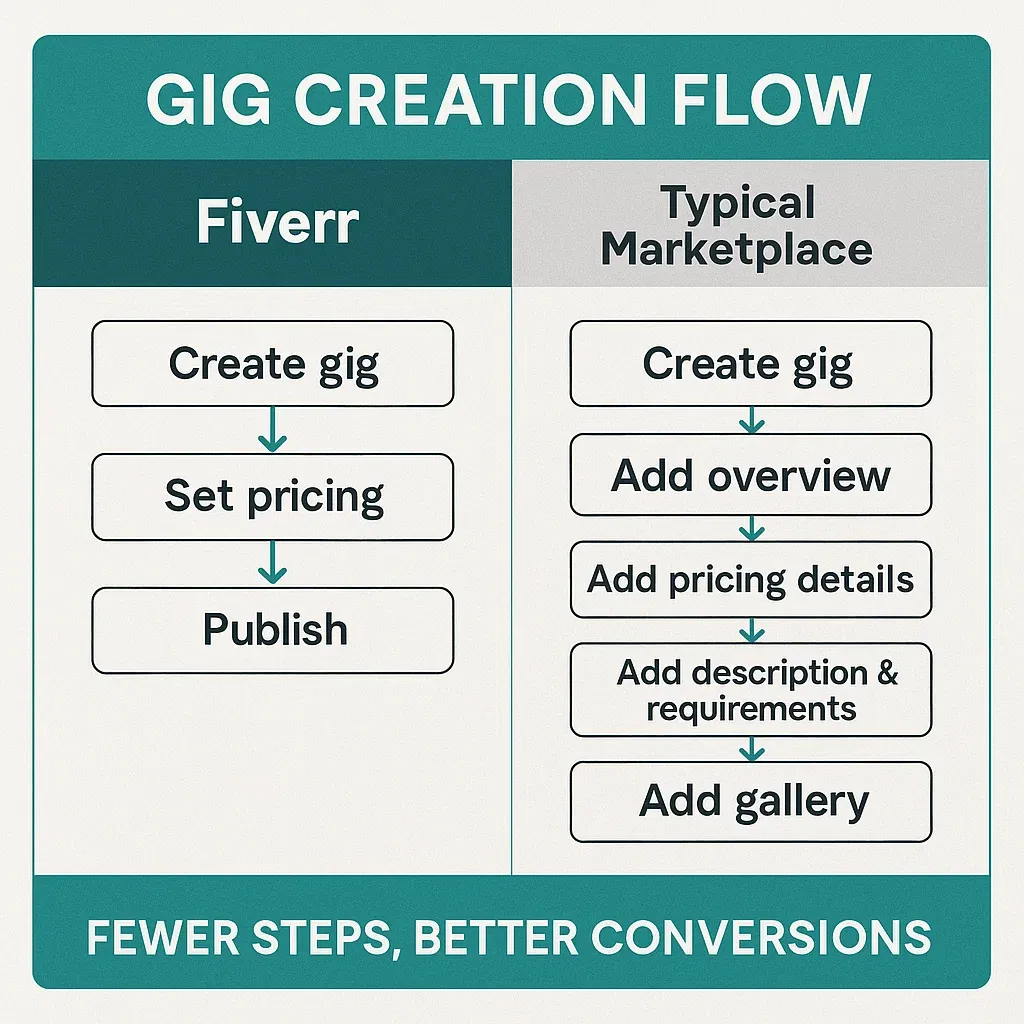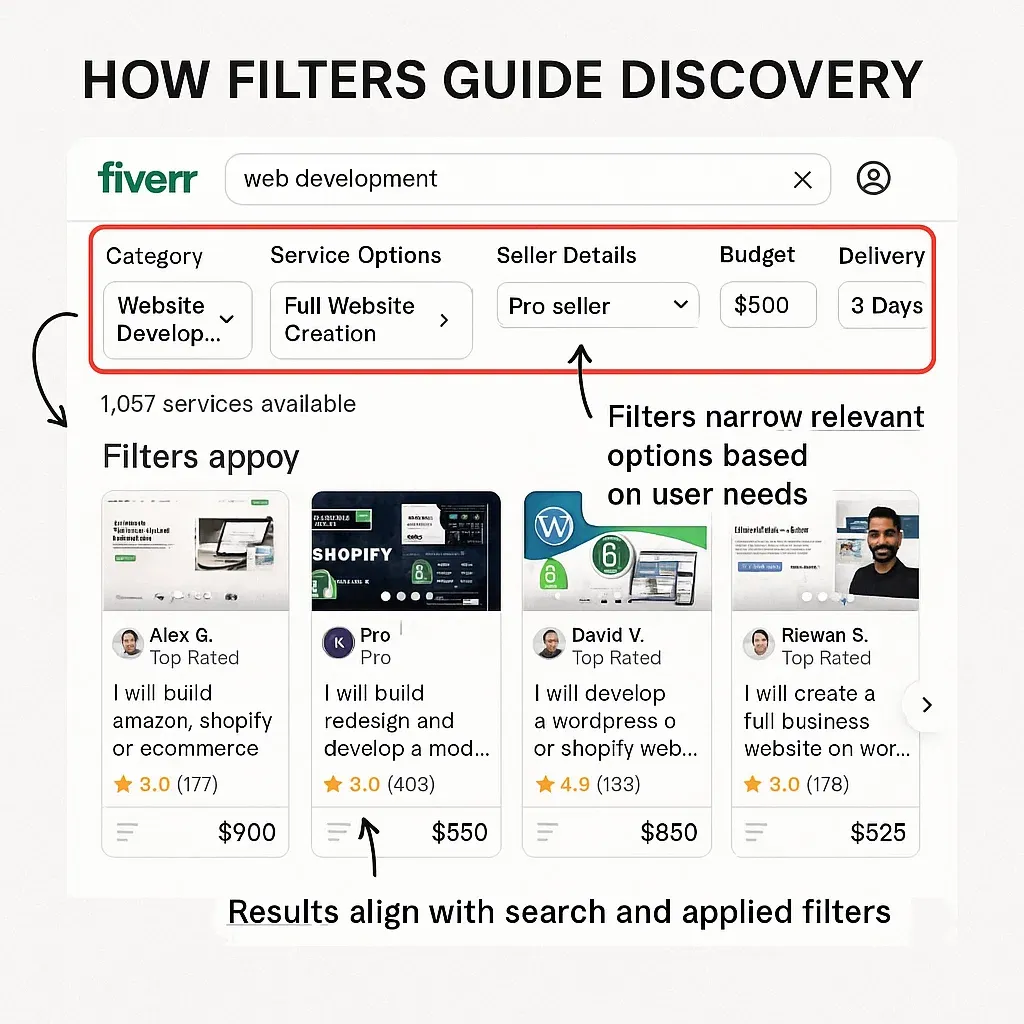If you’ve ever googled “how to earn money online” at 2 a.m. during a quarter-life crisis, chances are Fiverr popped up as a beacon of hope. For creators, coders, and caffeine-fueled side hustlers, Fiverr is like a digital jungle gym — chaotic, rewarding, and oddly addictive. From voiceovers to website audits to selling your grandma’s banana bread recipe as a gig (yes, that’s real), Fiverr’s flexibility is both the charm and the challenge.
Now, if you’re a startup founder or digital business owner thinking, “Could I build a platform like Fiverr… but better?”, the short answer is yes. But before you start dreaming of unicorn status, you’ve gotta dissect the beast. Fiverr didn’t climb the freelance food chain by accident — its features are clever, conversion-driven, and addictively intuitive.
Let’s dig deep into what makes Fiverr function like a well-oiled freelancing machine — and why entrepreneurs are racing to build their own Fiverr clone. And yep, that’s where a certain behind-the-scenes tech wizard named Miracuves comes in.
Read more: How to Develop a Fiverr App Alternative
What Is Fiverr?
At its core, Fiverr is a freelance service marketplace. It connects buyers (individuals or businesses needing work done) with sellers (freelancers offering skills). But it’s more than just a digital bulletin board — Fiverr thrives on automation, smart UX, and monetization-first thinking.
Unlike traditional platforms that price projects hourly, Fiverr lets freelancers list services (“gigs”) at fixed rates, starting at $5 (hence the name). But today, you’ll find gigs ranging from $10 to $10,000 — especially in high-ticket categories like animation, software development, and branding.
Fiverr belongs to a broader tech genus — gig economy platforms — that includes Upwork, TaskRabbit, Toptal, and even niche apps like Moj and Cameo. But its gamified UI and hands-off transactions set it apart. That’s why clone entrepreneurs want in on the action.
Read more: Fiverr Like App: How to Create a Successful Freelance Platform
Core Features of Fiverr That Keep Users Hooked
1. Intuitive Gig Creation & Management
Fiverr’s onboarding makes freelancers feel like pros in 10 minutes flat. The step-by-step gig builder lets users:
- Set tiered packages (Basic, Standard, Premium)
- Define delivery times
- Add FAQs, portfolio samples, and service add-ons
- Choose categories, keywords, and metadata for SEO
The interface is loaded with micro-copy and guidance nudges — making it a UX masterclass.

2. Transparent Pricing Model
Unlike hourly-based platforms, Fiverr thrives on productized services — clear pricing, clear deliverables. Buyers know exactly what they’re paying for. Sellers can upsell through:
- Add-ons (extra revisions, faster delivery, custom assets)
- Packages (starter to premium)
- Subscription-based gigs (recurring orders)
This structure minimizes haggling and builds buyer trust. It’s no wonder many clones mimic this pricing template.
3. Messaging, File Sharing & Order Tracking
The in-platform chat feels like WhatsApp meets Trello. Conversations stay order-centric. Users can:
- Share files (images, docs, code)
- Mark milestones
- Request updates or modifications
- Keep transaction history all in one thread
This blend of communication and task tracking improves transparency and reduces disputes.
4. Smart Search, Filters & Categories
Fiverr’s search is powered by behavioral data and keyword relevance. Users can filter:
- By category (e.g., Graphic Design → Logo Design)
- Budget
- Delivery time
- Seller level (New, Level 1, Level 2, Top Rated)
Each gig page is SEO-optimized with metadata, making internal discovery seamless and Google-friendly.

5. Seller Levels & Badging
Gamification isn’t just for TikTok and Duolingo. Fiverr incentivizes top performance through:
- Seller Levels (from Newbie to Pro)
- Response time tracking
- Completion rate stats
- “Rising Star” and “Top Rated Seller” badges
This nudges freelancers to deliver better service while helping buyers feel confident in who they hire.
6. Review & Rating System
Every order closes with a two-sided review — both buyer and seller rate each other. Feedback includes:
- Star ratings (from 1 to 5)
- Written testimonials
- Public and private review components
This builds Fiverr’s credibility loop. And the review algorithm smartly weighs recency and frequency.
7. In-App Payments & Secure Escrow
Fiverr’s financial structure is robust:
- Buyers pre-pay for services
- Funds stay in escrow until delivery
- Sellers get paid after buyer approval or auto-completion
- Supports credit cards, PayPal, Apple Pay, and local options
Fiverr charges a commission (typically 20%), making the model lucrative and self-sustaining.
8. Mobile-First Experience
With over 65% of users accessing Fiverr via smartphones, the app nails mobile UX:
- Fast-loading gig previews
- One-tap order tracking
- In-app notifications for milestones
- Swipeable chats and gig galleries
This isn’t just a desktop clone — Fiverr’s mobile strategy is baked into its growth.
9. Custom Offers & Buyer Requests
Sometimes buyers want custom work. Fiverr accommodates with:
- Buyer request board (freelancers can pitch offers)
- “Custom Offer” feature in chat
- Pre-order discussions
This adds flexibility without losing automation — a tricky balance that Fiverr manages with finesse.
10. Learning Hub & Fiverr Pro
Fiverr offers:
- Fiverr Learn: Courses for freelancers to upskill
- Fiverr Pro: Premium tier for vetted professionals with higher rates
This encourages community growth while pulling in high-ticket clients. Clone platforms can mimic this by integrating e-learning and B2B options.
Read more: Best Fiverr Clone Scripts in 2025: Features & Pricing Compared
Explore Miracuves’ expert on-demand freelance services—build scalable, intuitive freelance platforms with secure payments, real-time collaboration, and rapid deployment
Conclusion
Fiverr cracked the code by removing friction — not just for buyers, but for sellers too. It gamified trust, automated headaches, and made freelancing feel like shopping on Amazon. Every feature is quietly designed to scale transactions and reduce back-and-forth.
Thinking of building a Fiverr alternative for your niche? You don’t have to reinvent the wheel. Just refine it. Look for gaps Fiverr can’t fill — maybe regional languages, Web3 gigs, or AI-based services — and build from there.
At Miracuves, we help innovators launch high-performance app clones that are fast, scalable, and monetization-ready. Ready to turn your idea into reality? Let’s build together.
FAQs
Q:1 What’s the difference between Fiverr and Upwork?
Fiverr is fixed-price and gig-based, while Upwork often works on hourly contracts. Fiverr is faster and more streamlined; Upwork is better for long-term projects.
Q:2 How do Fiverr Pro sellers get verified?
Fiverr vets Pro sellers manually — through portfolios, interviews, and credentials. It’s invitation-based and competitive.
Q:3 Can I build a Fiverr-like app for a niche market?
Absolutely. Whether it’s writers, musicians, or AI engineers, Miracuves can help build your custom freelance platform tailored to any niche.
Q:4 Does Fiverr support recurring payments?
Yes. Sellers can offer subscription gigs where buyers are billed monthly for ongoing work — a growing trend in freelance ecosystems.
Q:5 How does Fiverr handle disputes?
There’s a resolution center where both parties can negotiate. If unresolved, Fiverr’s support team steps in to mediate.
Q:6 Is Fiverr clone development expensive?
With Miracuves, you get modular, cost-efficient Fiverr clone solutions that can be tailored to your budget — no bloated pricing or unnecessary fluff.
Related Articles:








